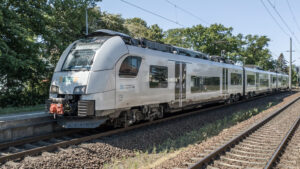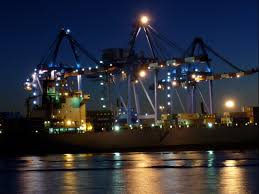Pradeep Tewari, Head, Head SCM, New Energy, Reliance Industries, outlines a pragmatic roadmap to green logistics, combining EVs, hydrogen, biofuels, and government policy to decarbonise freight at scale.

Green freight needs full-system support, not just isolated pilot projects
The road to sustainable logistics is steep, says Pradeep Tewari, and shaped by three interconnected obstacles: cost, regulation, and infrastructure. Zero-emission trucks, methanol-ready ships, and electric MHE still carry a 30–60 percent price premium and burn costlier fuels like SAF, green hydrogen, or ammonia. For thin-margin carriers, absorbing those costs is a non-starter. A patchwork of carbon rules and fuel standards complicates compliance. India’s FAME II and the National Green Hydrogen Mission help bridge gaps, but infrastructure is scarce. Tewari urges stronger incentives, grants, guarantees, and contracts for green freight to scale sustainably.
Tech stack
When it comes to transformative technologies, different tools suit different needs. Battery-electric trucks are best for long-haul runs (400–800 km), especially when paired with corridor megawatt chargers and depot plugs. Though about 30 percent more expensive upfront, they repay with lower maintenance and cheap power. Hydrogen fuel cells are ideal for short-turn, high-utilisation loops, offering five-minute refuelling. CBG—compressed biogas from agricultural waste—serves as a near-term bridge fuel, reducing up to 90 percent of CO₂ in CNG-compatible trucks. “Batteries will dominate trunk hauls, hydrogen will power fast-cycle operations, and CBG fills the gaps until infrastructure catches up,” he notes.
Phased strategy
Tewari lays out a three-phase transition plan. Phase 1 focuses on quick wins, electrifying last-mile vans, forklifts, and yard tractors using leased assets and rooftop solar for charging. Phase 2 scales the backbone with megawatt DC fast chargers every 150–200 km, TCO-positive 40-tonne tractors, and solar carports at large depots. Phase 3 brings in hydrogen and e-fuels: fuel-cell trucks for >500 km or 24/7 duty, collocated hydrogen hubs at ports and dry ports, and ethanol-ready ships on coastal trades. “Start where the returns are real,” he advises, “and lay the groundwork for what’s next while the concrete’s still open.”
Government role
Governments should move beyond pilot projects and support full systems, using grants and loan guarantees to reduce risks, like the Green Hydrogen Mission. Mandating fuel blends and setting phase-out dates for diesel drayage will unlock private investment. He also stresses the need for end-to-end infrastructure—megawatt chargers, bunkering stations, and rail electrification—as part of Gati Shakti and Sagarmala. Finally, open data on fuel origin and carbon intensity can eliminate greenwashing and accelerate carbon-insetting deals. “We need trustable rails for carbon data, just like for goods.”
Demand signal
Will people pay for greener logistics? “Yes,” says Tewari, “and many already are.” He points to PwC’s 2024 study showing consumers willing to pay 9.7% more for sustainable products and McKinsey’s 2025 research where one-third of U.S. e-shoppers will spend $1–2 extra for greener delivery. On the B2B side, BCG finds 80% of cargo owners willing to pay a 4.5% premium. “It’s not just CSR anymore—it’s a competitive specification,” Tewari concludes.











